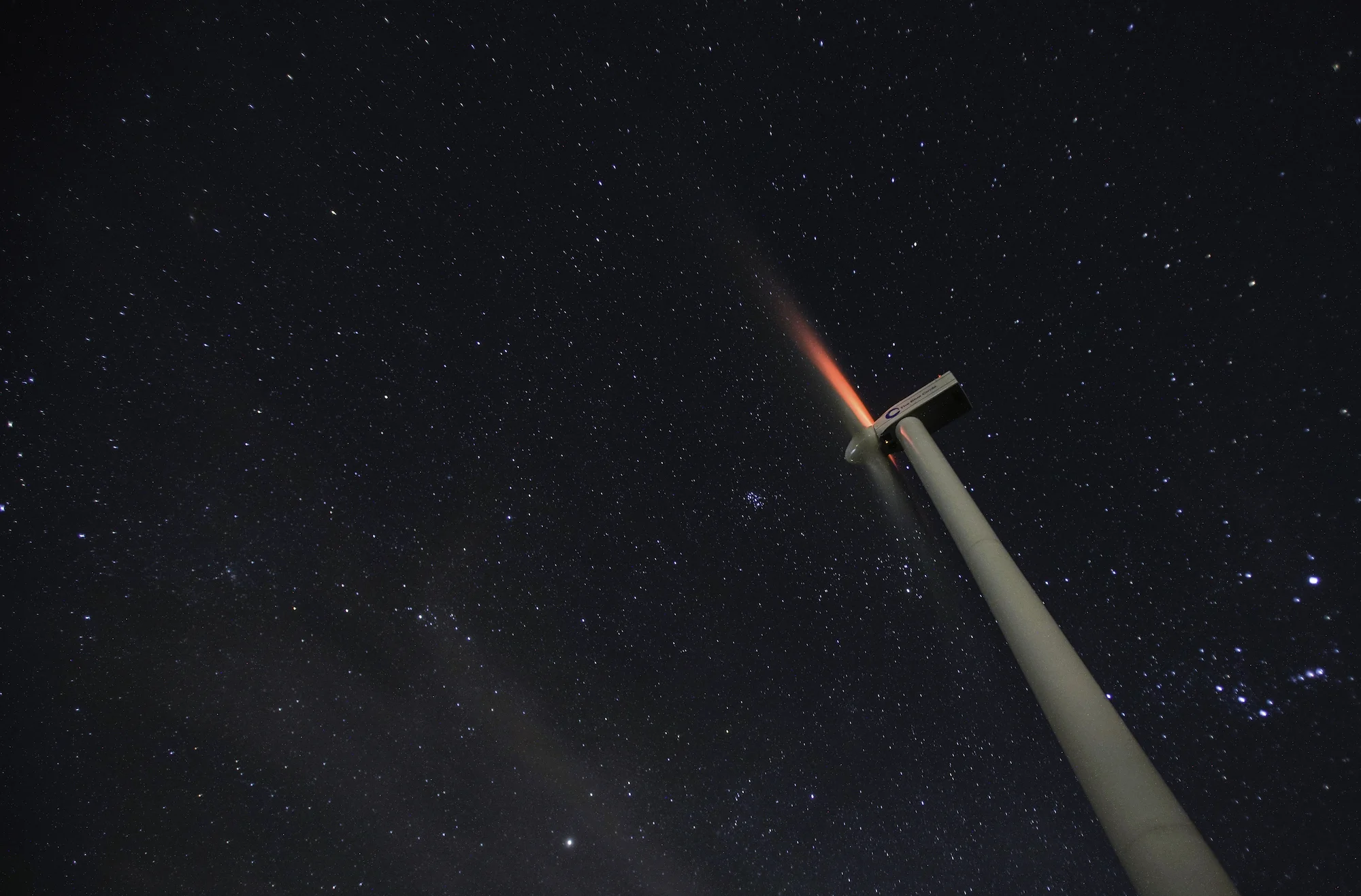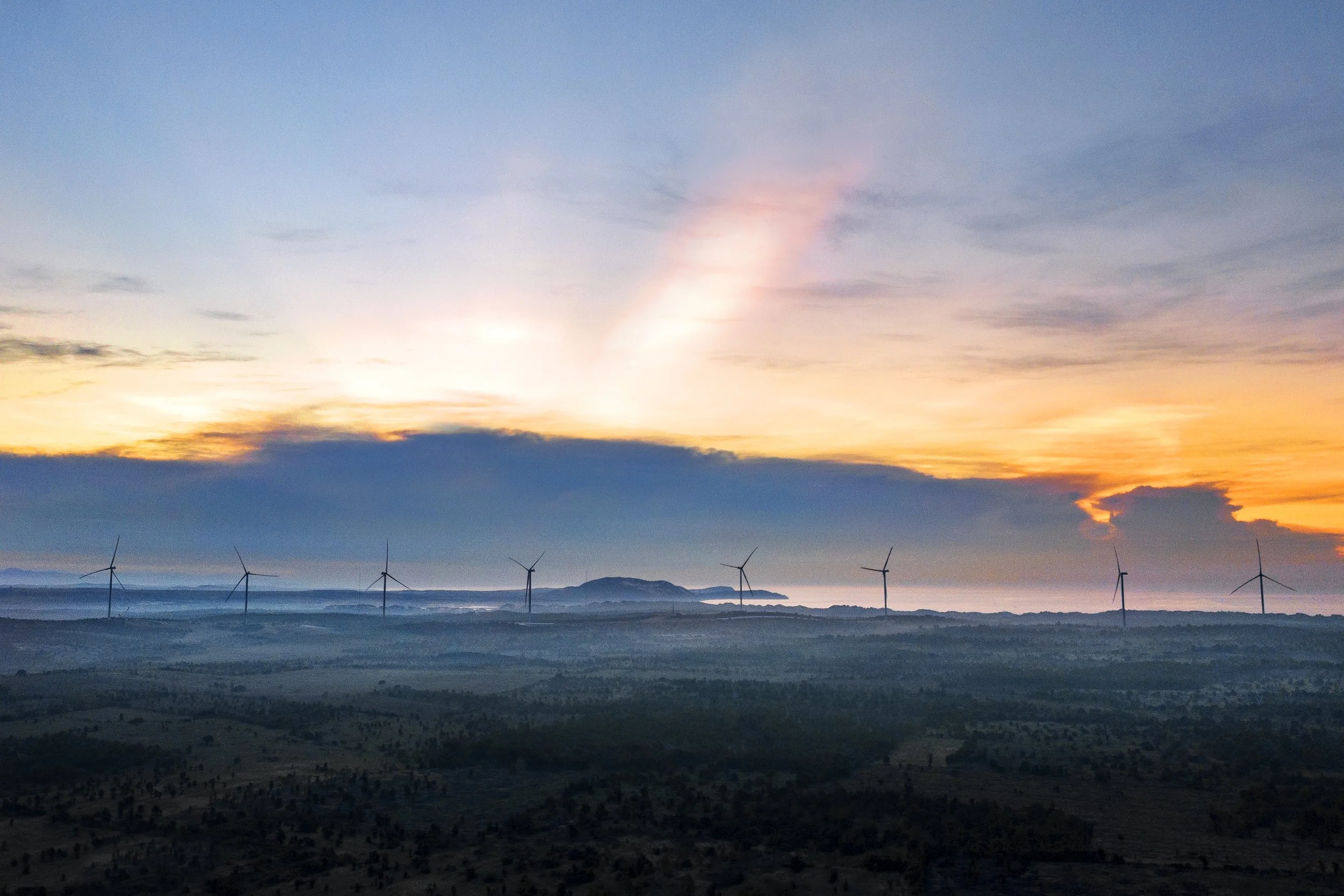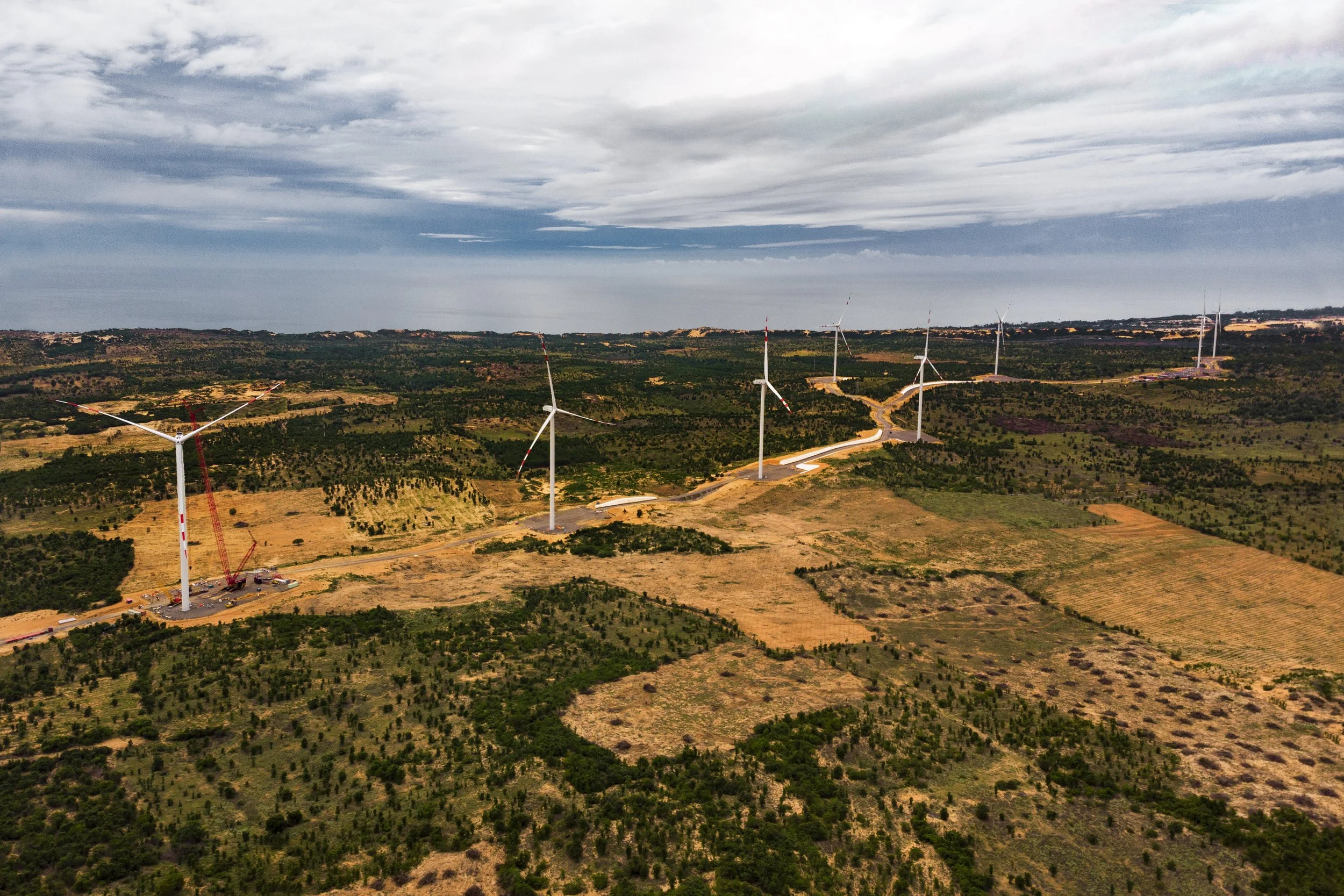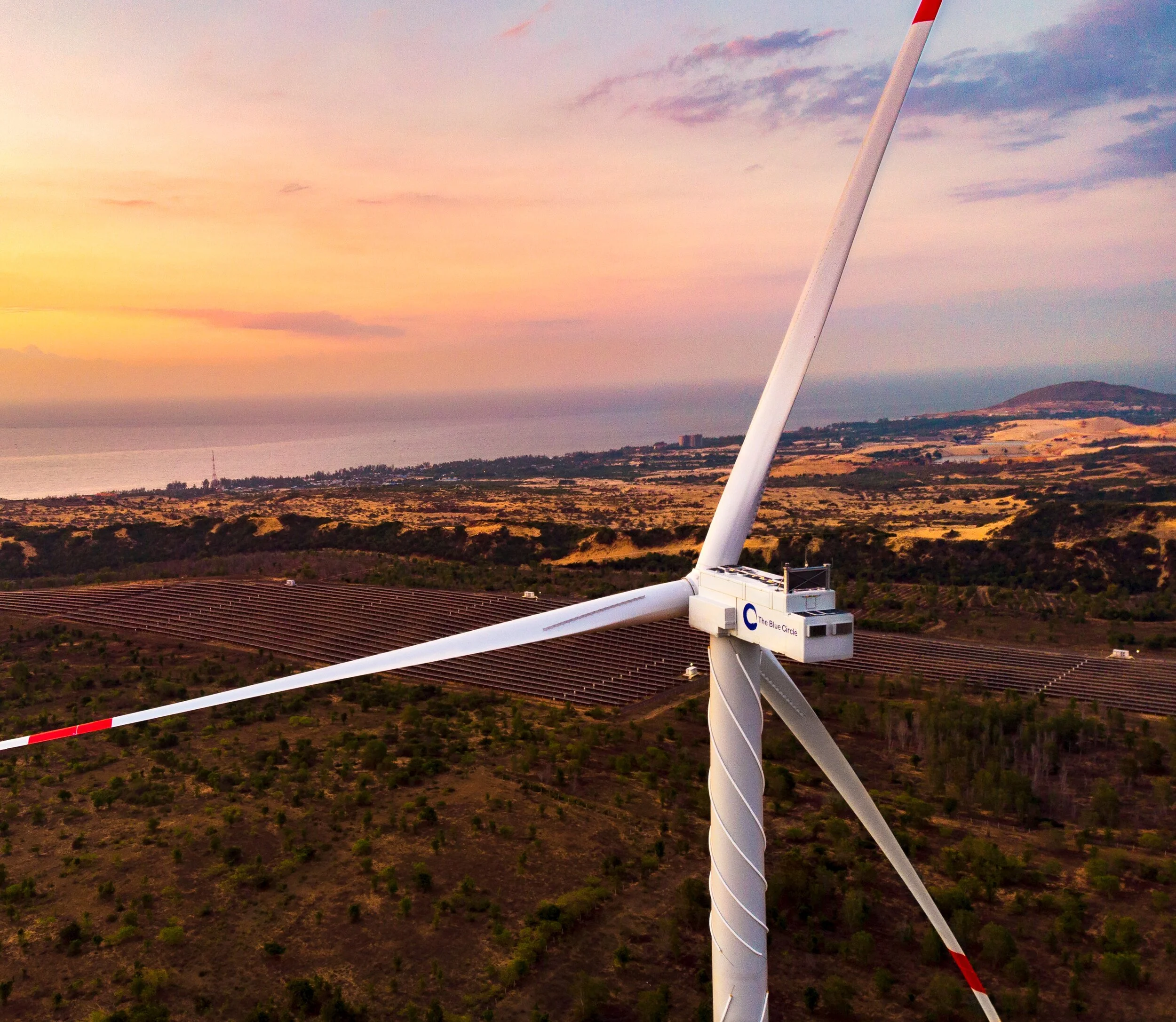ACEN and THE BLUE CIRCLE reach Commercial Operations for the Mui Ne Phase 2 Project
40 MW wind farm qualifies for Vietnam feed-in-tariff of 8.5 US cents per kWh
Approximately 130,000 metric tons of CO2 emissions will be avoided annually, contributing to a cleaner energy mix for the country
The Blue Circle and its partner, ACEN, the listed energy platform of the Ayala Group, have completed Phase 2 of the Mui Ne Project in the Binh Thuan Province of South Vietnam.
“We are very pleased to have been able to build, connect and reach commercial operations of this second phase of our Mui Ne site. 2021 has been undeniably a record year for the expansion of wind power in Vietnam and we are proud to have contributed with this project” stated Olivier Duguet, Chief Executive Officer of The Blue Circle.
The eight turbines, with a unit capacity of 5.0 MW for a total of 40 MW, carry the largest rotor diameter for an onshore wind project in Asia (158 meters) and are the first to use blades in two pieces assembled on site. Construction was completed after only eight months with over 450 construction staff involved in the difficult context of COVID-19 throughout the construction process.
“This two-pieces blade technology is a game-changer for onshore sites as it will allow larger capacity machines, lowering our cost of energy and enhancing competitiveness of wind energy. I am proud of our team for managing to achieve the project construction in time while facing exceptional constraints during a global pandemic,” said Hervé Grillot, Chief Operating Officer of The Blue Circle.
The Mui Ne Wind Project site has a total expansion potential of up to 170 MW in one of the best wind resource areas in continental Vietnam. The project’s estimated cost is around US$ 70 million, which is financed by debt and equity, and has qualified for the wind feed-in-tariff of 8.5 US cents per kWh. It is assumed that roughly 130,000 metric tons of CO2 emissions will be avoided annually, contributing to a cleaner energy mix for the country.
“We are delighted by the completion of Phase 2 of the Mui Ne Project, and the overall progress made in expanding our renewables presence in Vietnam. We are thankful to our long-standing partners at The Blue Circle for seeing this project through amidst the pandemic, and we are encouraged that ACEN’s other partnerships across Vietnam will likewise bring to fruition more renewable energy projects in the country,” said Patrice Clausse, Head of International Group of ACEN.
The Blue Circle will manage operations through an Asset Management Services contract.
###
About The Blue Circle
Founded in 2013, The Blue Circle identifies, develops, finances, owns and operates renewable energy projects in complex and challenging geographies in the Asia-Pacific region. The Blue Circle uses the most advanced technology to build responsible and sustainable projects. With offices in Singapore, Ho Chi Minh City, Bangkok and Phnom Penh, The Blue Circle is the leading renewable energy development company of Southeast Asia. Its team is committed to changing the world one green electron at a time.
About ACEN
ACEN is the listed energy platform of the Ayala Group. The company has ~2,900 MW of attributable capacity in the Philippines, Vietnam, Indonesia, India, and Australia. The company’s renewable share of capacity is at ~80%, among the highest in the region.
ACEN’s aspiration is to be the largest listed renewables platform in Southeast Asia, with a goal of reaching 5,000 MW of renewables capacity by 2025. On October 21, 2021, ACEN announced its commitment to achieve net-zero greenhouse gas emissions by 2050.
For inquiries and more information, please contact:
The Blue Circle
Amaury BRUCKER
Tel: +855 11 842 973
amaury.brucker@thebluecircle.sg
ACEN
Irene Maranan
Head – Corporate Communications and Sustainability
Email : maranan.is@acenergy.com.ph







